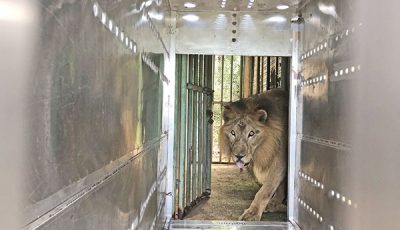For some families, the recovery has been slow going
Four weeks after Typhoon Soudelor destroyed their house and made them homeless, Robert Repeki and his wife, Matilda, are hanging on, by day enduring the scorching heat of the sun beating down on the tent they set up in their backyard in Tanapag, by night hardly getting any sleep due to the constant plague of mosquitos.
The couple’s struggle is compounded by the fact that Matilda and their 6-year-old daughter Roma both have asthma. To ensure that their daughter will always have oxygen, they sent her to live temporarily with Matilda’s sister, as she has a generator to power the oxygen machine.

Robert Repeki and his wife talk to a volunteer of the Community Outreach Recovery Effort in front of the closet that they hid in, in their bedroom during Typhoon Soudelor. (Jayson Camacho)
Repeki’s house, which has a bedroom, a living room, a kitchen, and a bathroom, is now totally damaged. Nothing was saved after the storm. Inside the shell of his house, one thing still stands: the closet in his bedroom that saved him and his family from the storm.
“When I saw the living room roof start to pull away and the wind was very strong, almost close to lifting me and blowing me away, I ran back into the bedroom and threw everything out of the closet,” Repeki said. “Then I took my wife and my daughter and we hid in the closet. I was holding the closet door so it won’t be blown away as well. Thank God that nothing happened. I was afraid for my family, my daughter was scared, my wife was scared.”
He remembers loud thumps, the wood on the roof hitting the closet and everything around the room just banging the closet until the winds died down.
“Next morning, I tried to look for the rest of my roof, nothing, I cannot find it at all,” he said.
Repeki knew that shelters were open in Tanapag Middle School and Tanapag Head Start even before the typhoon but they didn’t want to go there.
“We never went to the shelter. No, we stayed here. I know this area, I’ve been here for so long and I know what happens in this village. We were afraid to leave and go to the shelters because they might steal everything inside,” he said.
Later, when Typhoon Goni came in the wake of Soudelor a week later, Repeki said they sought cover at an abandoned house across what used to be their house.
He said they have already been assisted by the Federal Emergency Management Agency and American Red Cross-NMI Chapter.
“Red Cross came back after Typhoon Goni and they said they would replace the tarp that they gave us after Soudelor, but until now they are not here. Now we’re just waiting,” he said.
“The tent is hot to go into in the afternoon. At night [there’re] plenty [of] mosquitoes,” he added.
Matilda said they had to burn several of their remaining things in a small drum to keep the mosquitos away.
“We nearly burned all of our wooden stuff, because [they] cannot be repaired and we used it to make the mosquitoes go away,” she said.
They only use the small tent in their front yard at night for sleeping since it is too hot during the day. In the daytime they stay under a slanted grey tarp attached to their broken roof.
“My daughter went to my sister’s house. She cries sometimes because she wants to go inside and stay inside our house but cannot, and she has asthma so we sent her to my sister along with her oxygen machine for her asthma ‘cause my sister has a generator,” Matilda said.
They also have no working car and have to walk to the only store close to their house. Two other families whose houses are on the side and the back of the Repekis also can’t live in their homes because they’re unsafe.
A man living at the back house lives there with his wife and two children. The man, who declined to be named, said that he has had help from volunteer organizations, FEMA, and ARC-NMI Chapter.
“It’s just very hot, and the tent we have only covers the top. When it rains and water runs down, everything we sleep on gets wet, so we dry it the next day, and then redo it over…it’s hard but we’re doing fine for now,” he said.
The family at the side of the Repeki’s home, however, has no tent at all. The woman, who didn’t want to be named, was watching her grandchild, a 3-month-old baby, along with several kids under a tarp that had a bed.
“Yes, we sleep out here and, yes, these are my grandchildren. I’m just babysitting the baby right now, but we never had tent here, only the tarp and we have plenty of mosquitoes,” she said.
Volunteers from the Community Outreach Recovery Efforts gave all three family members care packages, extra mosquito nets, and extra mosquito coils, including 5 gallons of water that day.
The families around the area also noted that Rep. Vinnie Sablan (Ind-Saipan) visited them and gave them cases of water.

























